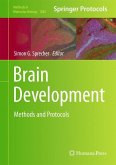With its complex anatomical, molecular, electrophysiological and behavioral components, epilepsy provides the neuroscientist with nearly boundless opportunities to examine basic neurobiological mechanisms. In Animal Models of Epilepsy: Methods and Innovations, prominent investigators in the field examine several novel models of epilepsy in mice as well as in genetically tractable "simple" species such as Drosophila melanogaster (fruit flies), Caenorhabditis elegans (worms), Xenopus laevis (tadpoles) and Danio rerio (zebrafish). While covering some traditional models, the volume also explores the newest innovations like modeling seizure activity in silica and advanced strategies for seizure detection and gene therapy. As a volume in the successful Neuromethods(TM) series, the chapters provide clear, step-by-step protocols and thought-provoking reviews of the most recent advancements in the field.
Comprehensive and cutting-edge, Animal Models of Epilepsy: Methodsand Innovations is an ideal guide for scientists who wish to expand our understanding of the pathogenesis of this neurological disorder.
Hinweis: Dieser Artikel kann nur an eine deutsche Lieferadresse ausgeliefert werden.
Comprehensive and cutting-edge, Animal Models of Epilepsy: Methodsand Innovations is an ideal guide for scientists who wish to expand our understanding of the pathogenesis of this neurological disorder.
Hinweis: Dieser Artikel kann nur an eine deutsche Lieferadresse ausgeliefert werden.
From the reviews:
"As a clinical epileptologist interested in fundamental aspects of epilepsy, I obtained a thorough update on the several frontiers of current epilepsy research from this lucid volume. Basic scientists will profit from these 14 distinct and succinct reviews that also treat methodology and pitfalls in detail. Thus, this work is recommended for basic science and clinical epileptologists as well as students of these disciplines." (Warren T. Blume, Canadian Journal of Neurological Sciences, Vol. 37 (4), July, 2010)
"As a clinical epileptologist interested in fundamental aspects of epilepsy, I obtained a thorough update on the several frontiers of current epilepsy research from this lucid volume. Basic scientists will profit from these 14 distinct and succinct reviews that also treat methodology and pitfalls in detail. Thus, this work is recommended for basic science and clinical epileptologists as well as students of these disciplines." (Warren T. Blume, Canadian Journal of Neurological Sciences, Vol. 37 (4), July, 2010)








